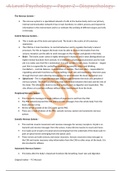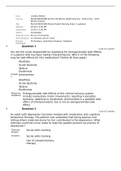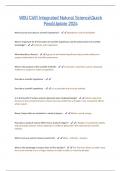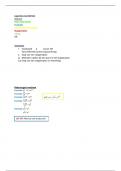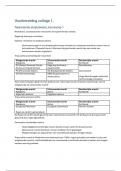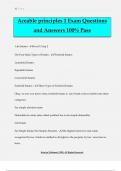Lecture notes
A Level Psychology (AQA) - Paper 2 - Biopsychology Revision Doc
- Institution
- AQA
- Book
- A-Level Psychology
A Level Psychology - Paper 2 - Biopsychology Revision Document Includes; The Nervous System (CNS & PNS), Endocrine System, Responses to Stress, Neurons & Synaptic Transmissions, Ways of studying the brain, Localisation and function of the brain, Plasticity and Functional recovery of the brain, Hem...
[Show more]
